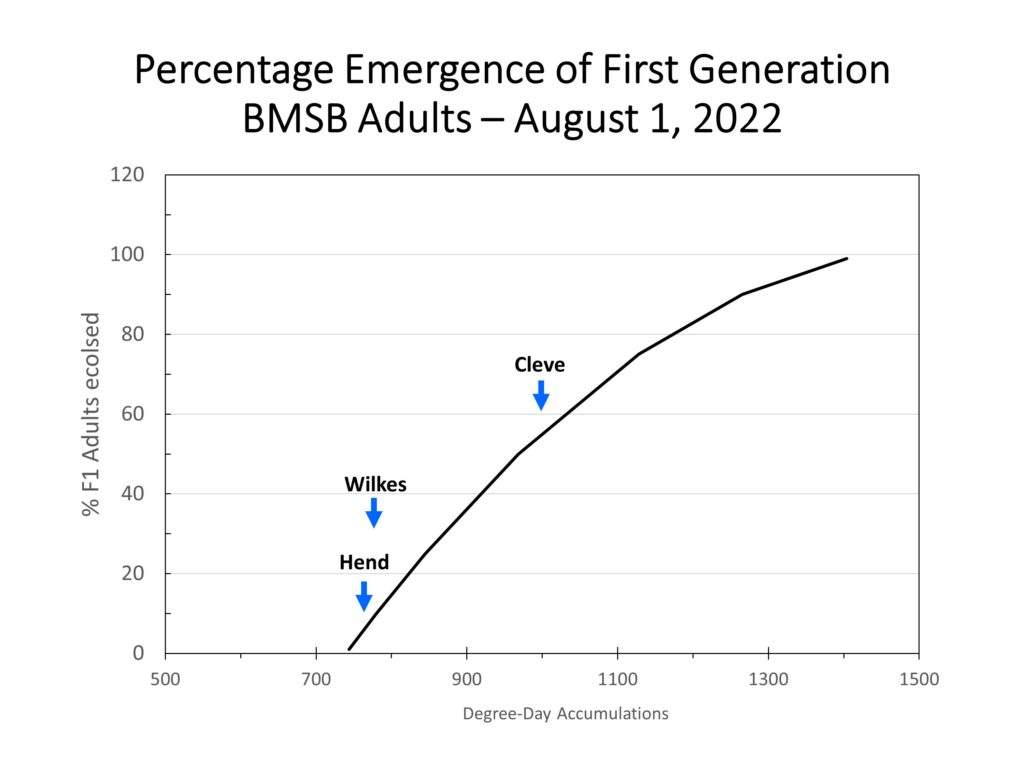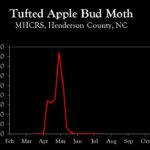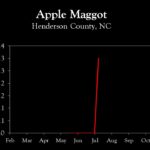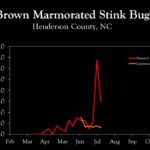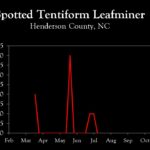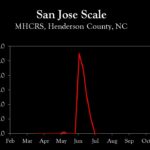WNC Orchard Insect Pest Populations – August 2, 2022
go.ncsu.edu/readext?878019
en Español / em Português
El inglés es el idioma de control de esta página. En la medida en que haya algún conflicto entre la traducción al inglés y la traducción, el inglés prevalece.
Al hacer clic en el enlace de traducción se activa un servicio de traducción gratuito para convertir la página al español. Al igual que con cualquier traducción por Internet, la conversión no es sensible al contexto y puede que no traduzca el texto en su significado original. NC State Extension no garantiza la exactitud del texto traducido. Por favor, tenga en cuenta que algunas aplicaciones y/o servicios pueden no funcionar como se espera cuando se traducen.
Português
Inglês é o idioma de controle desta página. Na medida que haja algum conflito entre o texto original em Inglês e a tradução, o Inglês prevalece.
Ao clicar no link de tradução, um serviço gratuito de tradução será ativado para converter a página para o Português. Como em qualquer tradução pela internet, a conversão não é sensivel ao contexto e pode não ocorrer a tradução para o significado orginal. O serviço de Extensão da Carolina do Norte (NC State Extension) não garante a exatidão do texto traduzido. Por favor, observe que algumas funções ou serviços podem não funcionar como esperado após a tradução.
English
English is the controlling language of this page. To the extent there is any conflict between the English text and the translation, English controls.
Clicking on the translation link activates a free translation service to convert the page to Spanish. As with any Internet translation, the conversion is not context-sensitive and may not translate the text to its original meaning. NC State Extension does not guarantee the accuracy of the translated text. Please note that some applications and/or services may not function as expected when translated.
Collapse ▲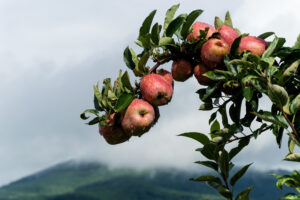 First generation brown marmorated stink bug emergence is beginning in Henderson and Wilkes Counties and other locations of similar elevation. Hence, pheromone trap captures should begin to increase next week; trap captures shown in this week’s figures represent last week’s captures. The potential for damage by BMSB will increase over the next few weeks, particularly on cultivars most susceptible to damage. See model predictions below for BMSB adult emergence and the table for insecticides recommended for control.
First generation brown marmorated stink bug emergence is beginning in Henderson and Wilkes Counties and other locations of similar elevation. Hence, pheromone trap captures should begin to increase next week; trap captures shown in this week’s figures represent last week’s captures. The potential for damage by BMSB will increase over the next few weeks, particularly on cultivars most susceptible to damage. See model predictions below for BMSB adult emergence and the table for insecticides recommended for control.
It is emphasized that BMSB rarely causes damage to early maturing cultivars such as Ginger Gold and Gala, so targeting these varieties with an insecticide for BMSB is probably not necessary. Those cultivars harvested in September are more susceptible, with Granny Smith, Pink Lady, Fuji, and finally Romes most susceptible to injury.
Insecticides recommended for brown marmorated stink bug control on apples |
||||
| Common name | Brand name | Pre-harvest interval (d) |
Rate/Acre (fl oz) |
Maximum fl oz/season |
| Pyrethroids | ||||
| Bifenthrin | Brigade 2EC, Fanfare 2EC | 14 | 9.6 | 28.8 |
| Beta-cyfluthrin | Tombstone 2EC | 7 | 2.4 | 2.8 |
| Cyfluthrin | Baythroid 1EC | 7 | 2.8 | 2.8 |
| Fenpropathrin | Danitol 2.4EC | 14 | 21.3 | 42.6 |
| Gamma- cyhalothrin | Proaxis 0.5EC | 14 | 5.12 | 20.48 |
| Lambda-cyhalothrin | Warrior II 2.08SC | 21 | 2.56 | 10.24 |
| Zeta-cypermethrin | Mustang Maxx 0.8EC | 14 | 4.0 | 24 |
| Neonicotinoids | ||||
| Chlothianidin | Belay 2.13F | 7 | 6 | 12 |
| Premixes | ||||
|
Lambda-cyhalothrin + chlorantraniliprole |
Besiege | 21 | 12 | 31 |
Codling moth, oriental fruit moth, and apple maggot
Second generation codling moth is either complete or nearing completion throughout the region. While there is sufficient time for a partial third generation, the potential for damage from this point forward is very low. Third and fourth generation OFM populations begin to overlap at this point in the season and models become less useful. Pheromone trap captures are the best tool for determining the need for insecticide sprays, but populations are generally low in commercial orchards and insecticides applied for BMSB will further suppress OFM.
Finally, the first apple maggot of the year was captured at our abandoned site this past week. While it is not an issue at this time, expect numbers to increase over the next few weeks.
Learn more about southeastern apple insect pests at the Apple Insect Management page.
2022 Average Weekly Trap Captures
| HENDERSON COUNTY | |||
| Insects per trap | |||
| Jul 18 | Jul 25 | Aug 1 | |
| Codling moth | 2.0 | 0.0 | 0.0 |
| Oriental fruit moth | 14.5 | 9.0 | 6.0 |
| Tufted apple bud moth | 0.0 | 0.0 | 0.0 |
| Redbanded leafroller | 0.0 | 1.0 | 0.0 |
| Obliquebanded leafroller | 1.0 | 1.0 | 0.0 |
| Lesser appleworm | 2.0 | 1.0 | 0.0 |
| Apple maggot (abandoned and research orchards) | 0.0 | 0.0 | 0.3 |
| Brown marmorated stink bug (commercial) | 1.3 | 1.5 | 1.2 |
| Brown marmorated stink bug (unsprayed) | 2.0 | 13.5 | 6.0 |
| Spotted tentiform leafminer | 1.0 | 0.0 | 0.0 |
| Dogwood borer | 0.0 | 1.0 | 1.0 |
| Peachtree borer | 2.0 | 2.0 | 3.0 |
| Lesser peachtree borer | 3.0 | 7.0 | 4.0 |
| San Jose scale | 5.0 | 0.0 | 0.0 |
| Ambrosia beetle (all species) | 0.3 | 0.0 | 0.0 |
*Note that these averages illustrate only the timing of insect emergence and fluctuations in populations, and are not representative of population levels in any given orchard. The only way to have an accurate assessment of an individual orchard’s populations is to set up traps in that orchard.
2022 Accumulated Degree Days
| HENDERSON COUNTY | ||||
| Jul 18 | Jul 25 | Aug 1 | ||
| Codling moth (Biofix: April 22) | 1643 | 1821 | 2020 | |
| Oriental fruit moth (Biofix: April 12) | 2163 | 2371 | 2598 | |
| Tufted apple bud moth (Biofix: April 27) | 1965 | 2173 | 2400 | |



